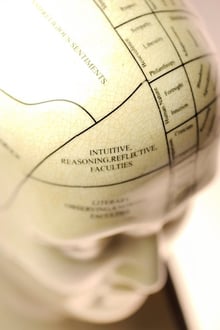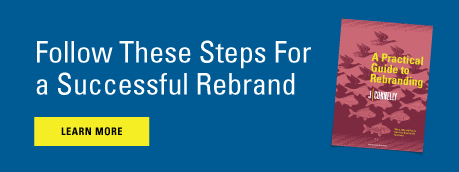
Everyone is telling stories these days—from Chicken Soup for the Soul-style personal confessionals to companies and brands flooding the internet with content—storytelling is a buzzword. Recently, I leapt at the chance to attend a talk by celebrated and cerebral author Jorge Volpi explaining the neuroscience behind stories at the Bronx Museum in New York, as part of the PEN World Voices festival. Now you can use science to fly above the swarm.
A scientific explanation for the current election cycle
Whatever your political inclination, you’ve probably been taken aback by this year’s US presidential race. It doesn’t seem to matter what candidates say, factual credibility, or the lack of it, no longer factors into poplularity. According to Volpi, we should have seen this coming, as the human brain cannot fundamentally distinguish fact from fiction. To paraphrase him, when you read Anna Karenina, you get to know her better than your own aunt. The key is personal relevance. The more familiar you are with something, the more “real” it is to you. Tolstoy’s gift for blending real events into the fictional characters’ lives also sets the stage for our comtemporary notion of “authenticity”. So when you find yourself saying, “this presidential campaign feels just like a reality TV show,” well, it is. It’s all too familiar.
So, if your brain isn’t busy sorting out fantasy from reality, what exactly is it doing?
Congratulations if you guessed the primary job of the brain is to speculate. It’s there to help you anticpate the future, all the better to navigate it. Essentially, people are just animals fixated on what might happen rather than what is happening.
To illustrate this, Volpi threw a book at an astonished member of the audience, who despite being offguard, caught it effortlessly. Apparently, the math involved in calculating the book’s trajectory could keep a decent-sized computer occupied for much longer than the book’s flight. But because we’ve all seen something like this happen before, our memory helps us figure out what is going to happen next. We can intuitively map out the parabolic arc of the book because we know how much a book of that size weighs and the force Volpi’s arm applied to it. Our past experience becomes a model for the future, endlessly crunching the probabilities in the same manner as the National Weather Service churns out forecasts. Luckily, in the case of the hapless audience member, with a high degree of accuracy.
This is the most useful thing our memory does. Sadly, according to Volpi, it is extremely unreliable at actually recalling past events. “If your mind was a computer, your memory would be a series of broken links.”
 Jorge Volpi gives a talk about the neuroscience behind stories at the Bronx Museum.
Jorge Volpi gives a talk about the neuroscience behind stories at the Bronx Museum.
Be at war with your audience
Despite faulty memories, readers’ brains are clever. This anticipatory power of the mind is always present. The principle of the airborne book applies to the words in it, too. Put another way, the “dear reader” is constantly trying to get ahead of the text. (You're doing it now! You can't help yourself!) This means the writer's task is to lay traps for readers. As Volpi puts it, “to deliberately obstruct the path of their expectations.” It’s a battle of wits which he likens to waging war.
Ironically, the most satisfied reader is the defeated one. Take murder mysteries for example. Aren't the most gratifying the ones where you thought you'd figured out who commited the dastardly deed but a final, unexpected event left you astonished?—OMG! The butler is innocent after all!
The power of empathy
Surprisingly, one of the most potent weapons deployed in this mental battleground is empathy. A recent area of study in cognitive science concerns what are known as mirror neurons. These cells inhabit several regions of the brain and it’s theorized they function as follows: When you see someone else move their arm, these neurons fire up to create a mirror image of that motion in your brain. Essentially, they create a simulation of the activity around you. While the most active research has taken place with monkeys, it's believed the same applies to humans, possibly more so. Importantly, as explained by Volpi, these neurons are triggered not just directly by the senses but by words and imagery as well.
A prominent line of thinking postulates that empathy is a function of these neurons. Put simply, mirror neurons make us see other people as similar rather than different. For an author this means it is relatively easy to write from an alternate point of view and inhabit a character. As a reader, your mind is filling in the blanks for you. You’re instinctively following along, acting out the story in your brain as if you were in it. This puts a lot of the onus on the reader, which why the lean style of someone like Hemmingway is often all that’s necessary to convey tremendous emotional complexity.
Fast brain vs slow brain
Understanding how the reader’s mind works gives content creators a powerful set of tools. But it still doesn't resolve the dilemma of staring at a blank page and wondering how to begin.
For this, Volpi takes inspiration from the work of Nobel Prize-winning economist Daniel Kahneman and his pioneering work summarized in Thinking, Fast and Slow. Writing is “Fast Brain” work—instinctive and emotional. Volpi’s directive: Put it down. Don't revise. Don't try to make sense of it. Rush along until you stop. Then engage your “Slow Brain” to edit and rewrite.
Most importantly, in an era that worships “virality”, Volpi advised us, “Ideas are free to go from one brain to another like deseases. Good ideas are pandemics!”




Let’s Connect
Ready to build, grow, manage and protect your brand? Complete the form below to discuss how we can help.